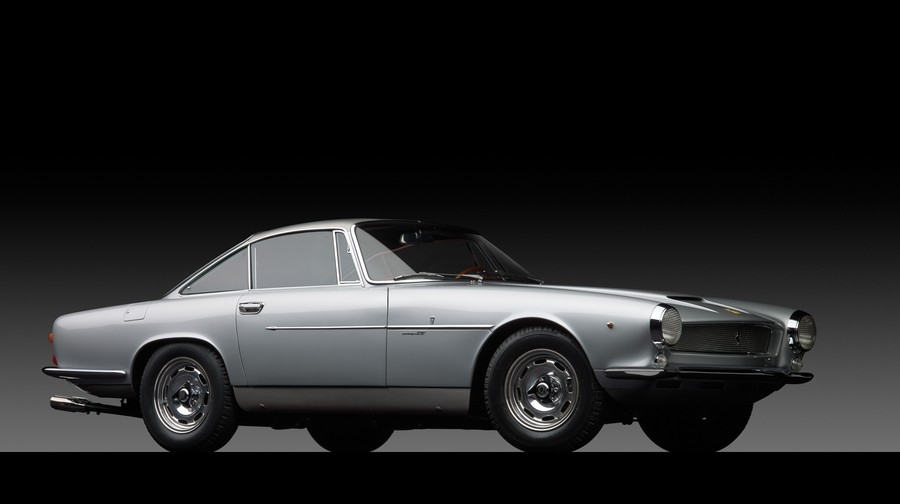SCM Analysis
Detailing
| Number Produced: | About 90 steel-bodied cars, 75 alloy-bodied |
| Original List Price: | $13,500 |
| Tune Up Cost: | $3,000 |
| Distributor Caps: | $450 (two required) |
| Chassis Number Location: | Left frame member by steering box |
| Engine Number Location: | Right rear above motor mount |
| Club Info: | Ferrari Club of America |
| Website: | http://www.ferrariclubofamerica.com |
| Investment Grade: | A |
This car, Lot 136, sold for $7,040,000, including buyer’s premium, at RM’s “Art of the Automobile” auction at Sotheby’s in New York on November 21, 2013.
We’ve become so numbed with automobiles selling at $10 million, $20 million and even $50 million, that a $7 million sale hardly elicits a yawn. It seems every major auction has a $5,000,000-plus sale, and big auction weeks produce several of these once-unheard-of prices.
Wealthy collectors have been known to buy multiple million-dollar cars in a weekend. There’s hardly a superlative left that hasn’t been used in describing one sale or another, yet there’s an element to the Ferrari 250 SWB market that makes it even more stunning than any of the individual sales.
Any SWB is worth millions
Drag most any crusty Ferrari 250 SWB out of a barn and you’ll have a $4m payday. If it’s a nice, matching-numbers example, add a few million more. If it happens to be an alloy-body factory-comp car with an important history, you might be able to double the last number.
The individual value of a 250 SWB is quite impressive, but it is even more impressive when you factor in how many of these cars were built. The SWB is not a rare one-off or miniscule-production model. There were around 175 of them built. Ferrari 250 SWBs are the most prolific $5m-plus cars on the planet, and the second-place car isn’t even close.
The theoretical value of the 250 SWB production run is, at this moment, just shy of a billion dollars. Chalk it up to the cars’ competition history, their beautiful lines or their easy drivability, collectors like 250 SWBs and will pay up to have one.
Extraordinary — but not the best
RM’s catalog quotes the late Ferrari historian Stan Nowak’s assessment of SWB chassis 1739GT as “possibly the one Ferrari that possesses all the criteria to contend for Best in Show at any major international concours, including Pebble Beach — one-off coachwork, influential design, debut at international salon, commissioned by prominent personality, built on special chassis, abundant bright work, impeccable history.”
Mr. Nowak was part of the team that assembled the Ralph Lauren collection, and his taste was second to none. However, he missed an important point: You could walk right by 1739GT at Pebble Beach without taking a second look. It is a beautiful car and impressive on inspection, but it just doesn’t have the wow factor to draw spectators from across the field.
Indeed, Chassis 1739GT has enjoyed significant concours success, but a Best of Show award is not among them.
Seven million dollars is a huge number, and by itself, that makes 1739GT one of the most valuable cars ever built, but as a 250 SWB, it only ranks in the middle of the price pack. The placement of the car in the hierarchy of the SWB world is no slight against it, but it is instead an endorsement on how right Pininfarina got their design.
Chassis 1739GT is an impressive and an important car, but as a contributor on Ferrari Chat concisely put it, “It has none of the sportiveness of the SWB and none of the sensuality of the Lusso.”
RM offered SWB 1739GT at their 2009 Maranello auction, where it was a no-sale. This time it sold toward the low end of a correct $6,500,000–$8,500,000 estimate. The buyer got a wonderful car, and the seller got the right price.
All this said, it’s interesting to note that, in an important Ferrari collection, 1739GT would be a novelty rather than the centerpiece this sales price might suggest. ♦
(Introductory description courtesy of RM Auctions.)
[nggallery id=217]
